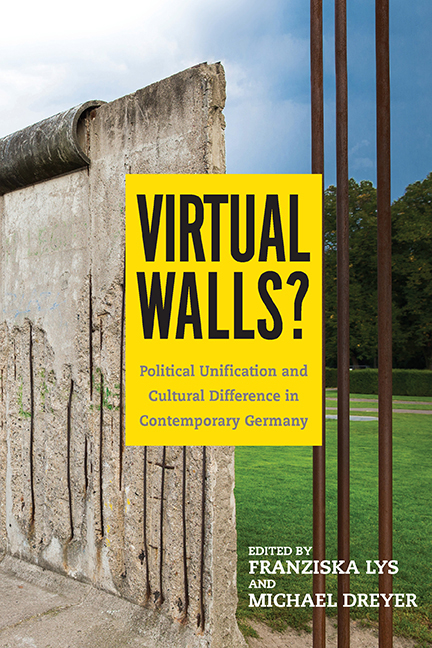Book contents
- Frontmatter
- Dedication
- Contents
- Acknowledgments
- Introduction: United Politics—Divided Culture?
- Part I What Remains: History and the Constitution
- Part II What and How Do We Remember? Literature, Film, and Exhibitions
- Part III A Changing Reception: Painting, Orchestras, and Theaters
- 6 Reexamining the Staatskünstler Myth: Bernhard Heisig and the Post-Wall Reception of East German Painting
- 7 East German Orchestras and Theaters: The Transformation since the Wende
- Part IV A Virtual Wall? Education and Society
- Epilogue: The Wende and the End of “the German Problem”
- Notes on the Contributors
- Index
6 - Reexamining the Staatskünstler Myth: Bernhard Heisig and the Post-Wall Reception of East German Painting
from Part III - A Changing Reception: Painting, Orchestras, and Theaters
Published online by Cambridge University Press: 24 August 2019
- Frontmatter
- Dedication
- Contents
- Acknowledgments
- Introduction: United Politics—Divided Culture?
- Part I What Remains: History and the Constitution
- Part II What and How Do We Remember? Literature, Film, and Exhibitions
- Part III A Changing Reception: Painting, Orchestras, and Theaters
- 6 Reexamining the Staatskünstler Myth: Bernhard Heisig and the Post-Wall Reception of East German Painting
- 7 East German Orchestras and Theaters: The Transformation since the Wende
- Part IV A Virtual Wall? Education and Society
- Epilogue: The Wende and the End of “the German Problem”
- Notes on the Contributors
- Index
Summary
Heisig and the Fall of the Wall
WHEN THE BERLIN WALL FELL unexpectedly on November 9, 1989, the East German artist Bernhard Heisig already had many of his most important works hanging in a museum in the West. Just a few weeks earlier, on September 30, a major exhibition containing 120 of his paintings and more than 300 prints and drawings had opened at the Martin- Gropius-Bau in West Berlin. Bernhard Heisig, Retrospective was the largest and most comprehensive exhibition of an East German artist ever held in West Germany. It was also the first major exhibition of a postwar German artist—East or West—put together by a collaborative effort of East and West German curators; it would travel to cities in both countries over the course of the next year. At the age of sixty-four, Heisig had made it as a “German” artist—highly praised for his work in both East and West—at a time when a unified Germany still seemed decades away.
Within weeks of the Berlin Wall's collapse, however, Heisig's reception changed drastically. Rather than praising his work for its commitment to the Expressionist tradition and history, the West German press now attacked him for his biography and, in particular, for his connection to the German Democratic Republic (GDR), where he had been both a successful artist and a powerful cultural figure. These often vehement attacks in the press, which lasted for more than a decade, have become known as the German-German Bilderstreit, or “image battle,” and were aimed at East Germany's most successful artists. At stake was what role, if any, East German art and artists should be allowed to play in the new Germany.
In these debates the term Staatskünstler, or “State Artist,” was frequently used as shorthand to dismiss these highly praised artists. In this chapter I will focus on this term with regard to Heisig in order to better understand the tendentious nature of East German art's reception after the Wende and, in particular, the Bilderstreit of the long 1990s. What does the term Staatskünstler actually mean, both literally and by implication? Who used the term? And why? Ultimately, I will argue that Staatskünstler, when used with East German artists, perpetuates negative stereotypes that undermine a deeper understanding of the artists and the work they created.
- Type
- Chapter
- Information
- Virtual Walls?Political Unification and Cultural Difference in Contemporary Germany, pp. 117 - 130Publisher: Boydell & BrewerPrint publication year: 2017

